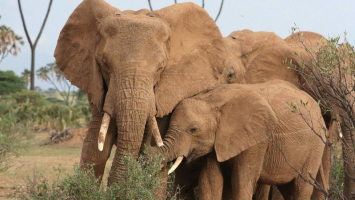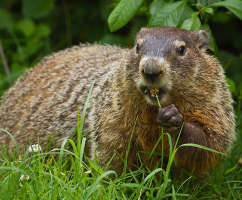Top 8 Predators of Skunks that Eat Skunks
Ground animals called skunks are mostly found in the Americas. They are closely related to other animals including weasels, polecats, and badgers and are a ... read more...member of the Order Carnivora. Skunks have a system of anal sweat glands that produce a fluid that they employ to ward off predators. It emits a strong stench when released that keeps away any prospective predators. Skunks can still become prey to a number of predators, though, if they are not vigilant. The following is a list of predators of skunks that eat skunks.
-
The Great Horned Owls are one of the genuine predators of skunks that eat skunks. These nocturnal, solitary birds, often known as Tiger owls, are members of the Strigiformes order. They are mostly carnivorous and eat small animals and insects, including skunks.
Like all other owls, the Great Horned Owls are accomplished hunters no matter what habitat they are in. These birds are skilled in stealthy hunting techniques because of their natural coloring, which works well as a natural camouflage. They usually hunt at night, taking advantage of the darkness. These owls have exceptional eyesight and may spot unwary prey on the ground. They swoop down with perfect flight patterns after they have decided on their meal, thanks to their large wings. These owls smash their prey's bodies with their powerful talons when they grab them. After killing their victim, they proceed to dismember it before transporting the pieces to their nests.
Since they cannot see great-horned owls coming, skunks frequently have little protection against them. Skunks can only use their sprays to defend themselves if they can see the predators coming. The skunks are at the owl's mercy now that they no longer have the benefit of high ground.
Photo: The Spruce - Great Horned Owl 
Photo: Wikipedia - Great horned owl -
Skunks are quite vulnerable to strikes from the air. They can't discharge their fluids in the time since they can't see the air above them, especially if they become startled.
Eagles are among the greatest acrobatic predators. Eagles are huge, well built, and have enormous heads and beaks. Despite having less aerodynamic feathers, even the tiniest eagles, such as the booted eagle (Aquila pennata), which is equivalent in size to a common buzzard (Buteo buteo) or red-tailed hawk (B. jamaicensis), have considerably longer and more uniformly spread wings and more direct, quicker flight. A few vultures and the majority of eagles are the largest raptors. They don't have many natural predators as they are at the top of the food chain or close to it. Additionally, they have excellent vision. Astonishingly, they can detect a skunk or a rabbit up to three kilometers away.
Their nearly excellent eyesight allows them to surprise and catches skunks off guard before they can spray their offensive odor. The eagle will either kill the skunk there and then transport it to another location till it matures and becomes an even easier meal for the eagle to consume.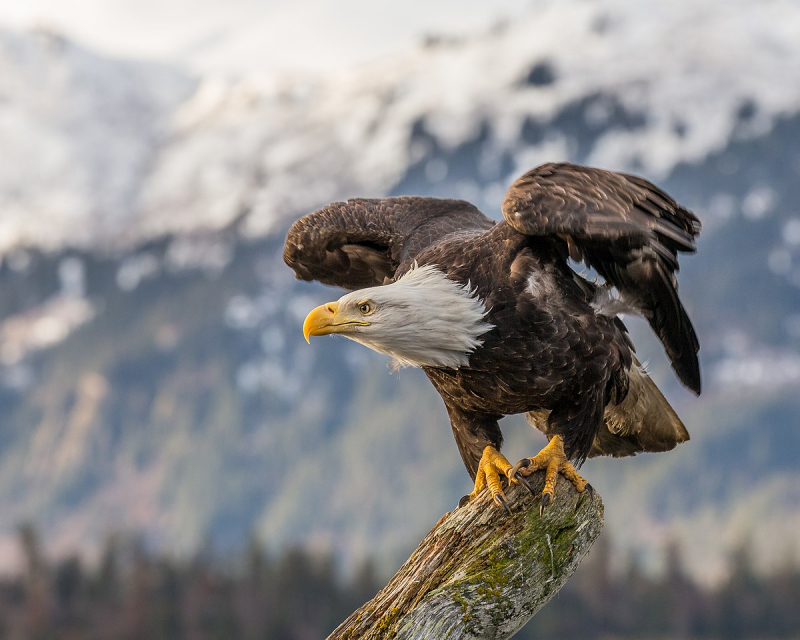
Photo: Wikipedia - White head eagle 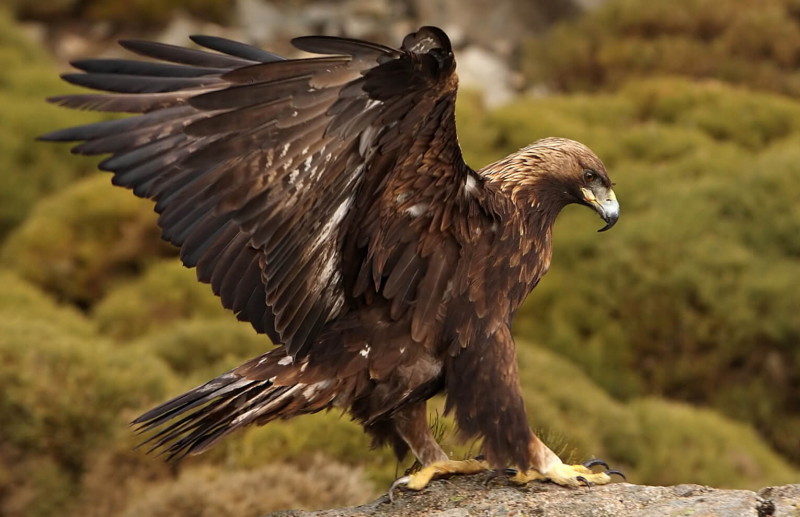
Photo: American Bird Conservancy - Golden Eagle -
The red fox has to be one of the principal skunk-eating predators, primarily because foxes and skunks live in a habitat that is quite similar. This indicates that Red-Foxes frequently come into contact with skunks and, as opportunistic feeders, devour these animals with black-and-white stripes.
The red fox is a well-known species in the Northern Hemisphere and has long been regarded as the most significant fur-bearing mammal. They are omnivores and eat a variety of vegetables, tiny rodents, and other animals in addition to these. Natural predators of ground-dwelling birds like chickens and turkeys are. Foxes are therefore commonly observed stalking in and near chicken farms.
Red foxes are outstanding predators and are regarded as the top member of the fox family. They are adept at seeking their prey and have enhanced hearing and smell senses. They locate their prey precisely via sound, then pounce on them utilizing their exceptional agility and grab them with their strong fangs. If they cannot find any easier prey to pursue, red foxes will occasionally decide to hunt skunks. The red fox is a physically superior animal in every way because of its quickness and keen sense of hunting. But any would-be fox trying to murder the skunk is more than enough discouraged by the skunk's defense smelly spray.
Photo: Natural Resources Council of Maine - Red Fox Video: Smithsonian Channel - Red Fox Hilariously Pounces Headfirst Into Snow -
The red-tailed hawks are raptors that are members of the Accipitriformes order of birds. There are more than 14 distinct subspecies of this bird, which is the most widespread hawk species known to exist in North America. These fiercely opportunistic and predatory birds have superb vision and can locate their prey at considerable distances. Red-tailed hawks can eat nearly everything since they don't have particular food preferences, including skunks, which most other animals appear to avoid (for the right reasons).
The red-tailed hawk is a carnivore through and through since it is a predatory bird. This bird has been seen to feed on any tiny animal in search of food. It is not known if it has a favorite species. Due to the hawk's preference for hunting ground animals, rodents and squirrels are its preferred food sources.
All land-dwelling animals are fair prey for red-tailed hawks since they are natural hunters. These birds have the ability to identify unsuspecting prey from a perch in the distance and then swoop down with incredible speed. They grab their victims with great vigor, rendering them unconscious so the hawk may consume them.Skunks that come into contact with this hawk's hungry gaze are, to put it mildly, helpless. This skunk predator can spot them from a mile away. The hawks may chase them so quickly that their defenses are unable to react in time. Skunks are at the mercy of hawks, just as the Great Horned Owl.
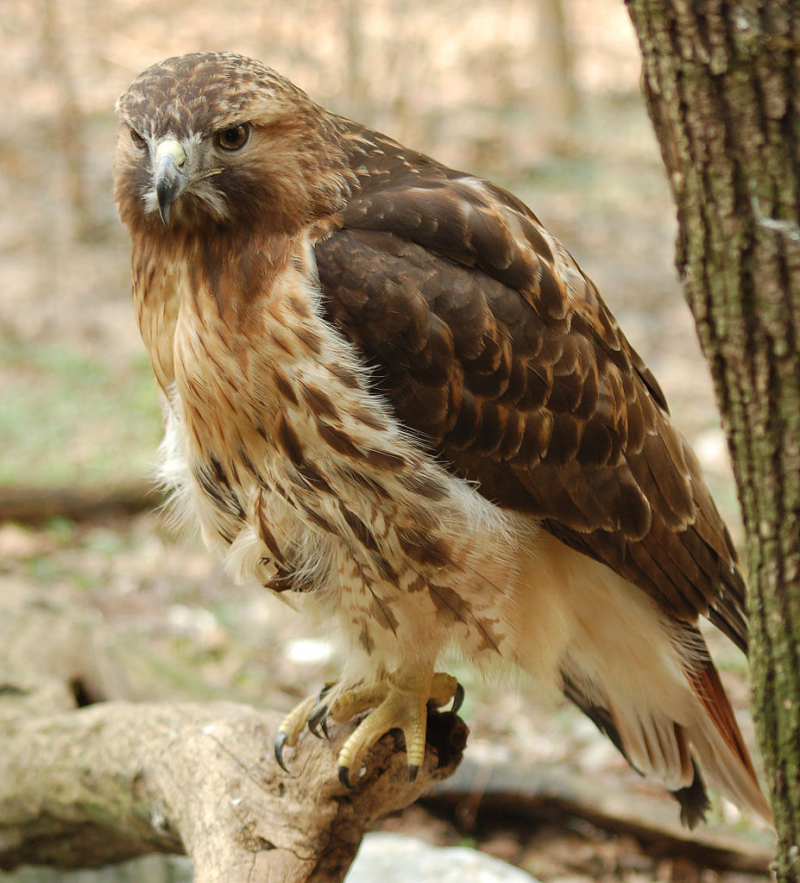
Photo: Wikipedia - Red-tailed Hawk 
Photo: Blackland Prairie Raptor Center - Red-tailed Hawk -
Large cats known as cougars or mountain lions are found all throughout Canada and South America. The cougar hunts a range of animals as an ambush predator. Although ungulates, especially deer, are its main food sources, it also hunts smaller animals like rodents. It may dwell in open areas but prefers environments with lots of underbrush and rocky outcrops for stalking. Skunks often become prey to these excellent ambush predators without even being aware of them since they frequently go undetected. Skunks are practically defenseless when cougars or mountain lions attack on them, making them easy prey.
The cougars' quickness and better hunting skills virtually ever stop them from killing and devouring skunks. Since cougars are ambush predators, as previously indicated, they prowl through the woods rather than pounce on their prey. Once they have identified their prey, however, cougars spring onto the back of the skunk and kill it almost instantaneously with a strong and suffocating neck bite.
Although cougars occasionally hunt on skunks, they often don't. Instead, ungulates including different types of deer, moose, and elk make up the majority of their diet. An essential component of a cougar's typical diet is said to consist of caribou, coyotes, horses, and bighorn sheep. However, there are regional variations in dieting behavior.
Photo: Wikipedia - Cougar 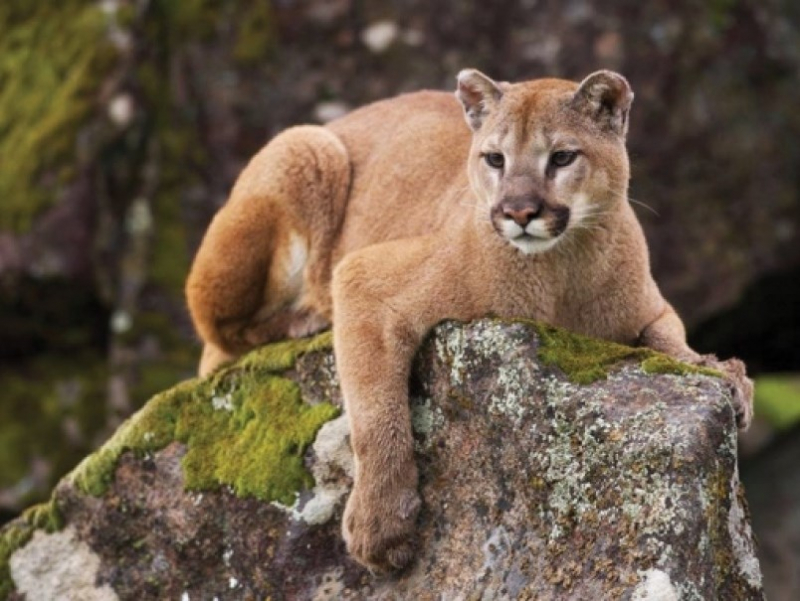
Photo: Prince George Citizen - Cougar -
Only in North America can you find coyotes, which are a common species. These canines, often known as the "American jackal," share characteristics with both wolves and real jackals. These are wild, predatory creatures that feed on smaller mammals. Compared to wolves, coyotes are significantly more elusive. Despite traveling in packs when necessary, coyotes hunt in a manner that is far more like to that of a fox than a wolf. That works for them against larger prey, but it's not the ideal strategy when facing a skunk.
Coyotes are well-known predators because of their elite physical attributes and propensity for cooperation. Coyotes can move at a pace of 40 miles per hour when necessary and are very quick animals. In addition to hunting by themselves, they may also pursue larger prey in packs. Killing deer and elks is not free from coyotes' oppressive hunting.
Skunks will be somewhat successful in deterring coyotes from attacking. Even the predators of its family that resemble coyotes find its acrid spray repulsive. For a persistent coyote, though, this is not an issue. A coyote that has caught up to the skunk may defeat it with a bite from its formidable jaws thanks to its speed and agility.
Photo: Austin American-Statesman - Coyotes get wily in Westlake area 
Photo: Treehugger - Coyotes -
Only North America and a few surrounding locations are home to the wild cat known as the bobcat or red lynx. Due to its widespread distribution and substantial population, it has been categorized as Least Concern on the IUCN Red List since 2002. Populations have remained steady despite being heavily hunted for sport and fur, while certain regions have seen a decline. The 49-inch-long bobcat lives in semi-deserts, marshes, bushy regions, and the borders of cities. Its tail is 'bobbed' and has a black tip, thus its name.
Because bobcats and skunks live in environments that are fairly similar, they frequently cross paths, and since bobcats are opportunistic eaters, they do not allow skunks get away. The diverse hunting techniques of bobcats, which vary depending on the prey under focus, make skunks an easy kill for them.
For instance, bobcats may sleep, stand, or remain in a crouch while hunting tiny rodents and creatures like mice and moles, pounce on the prey as soon as it comes within striking distance, and other predators will do the same. On the other hand, bobcats wait for their prey to get closer before attacking and killing it when it is within at least 20 feet of them when it comes to large creatures like small ungulates, domestic cats, and even skunks.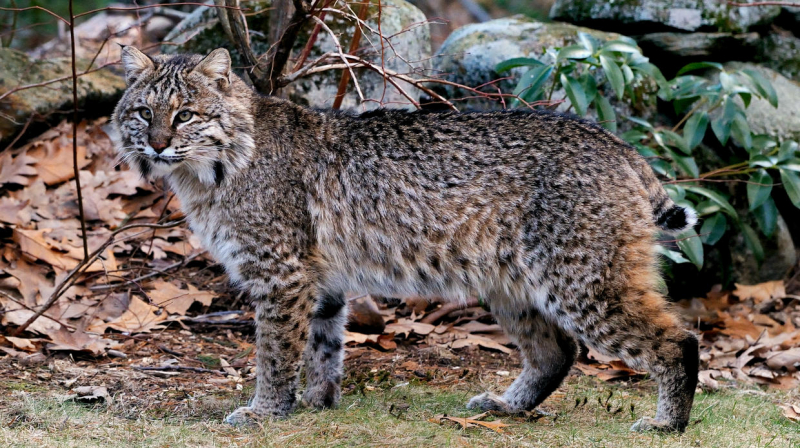
Photo: Mass.gov - Bobcats 
Photo: iStock - Skunk And Bobcat -
Dogs are also one of the predators of skunks that eat skunks.
Even dogs have the power to kill and consume skunks, but they usually choose not to. Some dog breeds are capable of killing a skunk, particularly the predatory kinds that we keep at home. However, if the skunk is ready for the assault, the dog will usually flee due to the skunk's foul odors.
Your dog won't emerge from it smelling like roses if he ignores the skunk's foul warning and ends up murdering the animal. The dog confronts additional dangers, such as getting bitten or scratched, in addition to the skunk's poisonous spray, which can irritate the dog's eyes, nose, mouth, and throat and create inflammation. It is advisable to make sure that your dog is kept away from skunks.
Skunks are rabies carriers. Your dog could have been exposed to rabies if he was bitten by a skunk carrying the disease or if the skunk's saliva was consumed as he was being killed. Look for bite marks and open wounds on your dog, and treat any that you find with disinfecting soap. Take the dog to the doctor so that it may be thoroughly checked if you have even the slightest suspicion that the skunk bit the dog. Take the skunk's body for testing as well, if you can. It's also conceivable that your dog's encounter with the skunk resulted in non-rabies wounds. Skunks hiss and spray to ward off an assault, but once a battle starts, they will scratch and bite.

Photo: Poisoned Pets - Dog and Skunk 
Photo: Science News - Dog














